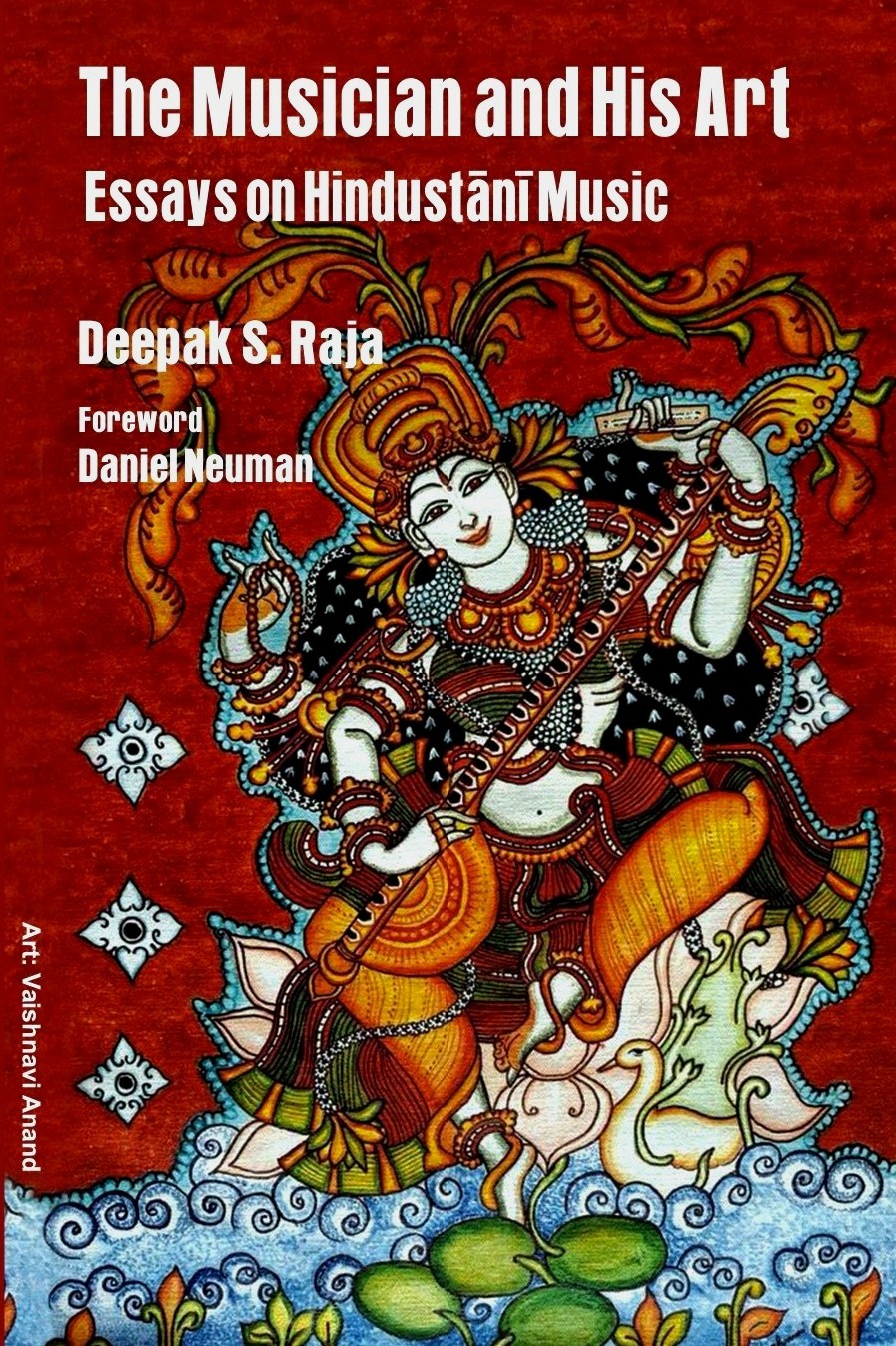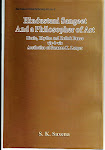
Dasgupta spoke to
Deepak Raja
Deepak Raja
on October 27, 1997 and December 3, 1998.
I was born in 1933 at Bhagalpur in Bihar. My father was a government servant on transferable duty. Being a music enthusiast, he made it a point to establish contact with local musicians wherever we moved, and quickly became a part of the local music circle.
As a child, I showed no particular inclination towards music. My parents' early attempts at getting me interested were most disheartening. The turning point came when I was nine years old. We moved to Rajshahi (in present-day Bangla Desh), where the local Zamindar (feudal chieftain), and also the region's most distinguished musician, was an exceptionally handsome man called Radhika Mohan Maitra.
For all his wealth and social status, Radhu Babu, as he was affectionately called, was an unassuming man. At my father's invitation, he agreed to give a performance at our house. I cannot recall if his music made much of an impression on me. But, the visual image of this attractive man, playing his tantalizing instrument, captivated my imagination. It was pure, and simple, hero-worship.
 I desperately wanted to be like him, and to learn from him. My father vetoed the idea on the grounds that the transferable nature of his job would deny continuity to my training. When this domestic dispute was revealed to Radhu Babu, he pleaded my case with my parents.
I desperately wanted to be like him, and to learn from him. My father vetoed the idea on the grounds that the transferable nature of his job would deny continuity to my training. When this domestic dispute was revealed to Radhu Babu, he pleaded my case with my parents.
My father was candid with him. He argued that I was not an heir to ancestral lands, and would have to qualify myself professionally to make a decent living. Radhu Babu assured my father that if, at any stage, my music interfered with my education, he would suspend my training in music. On this condition, I was allowed to study with Radhu Babu. In less than a year thereafter, my family moved to Khulna (also in present-day Bangla Desh). Radhu Babu, by now a close friend of the family, continued to visit us from Rajshahi -- for a few days each time -- and to teach me.
Then came independence, and the partition (1947). My father was transferred to Calcutta, the provincial head quarters of undivided Bengal, which remained in India. Radhu Babu lost all his ancestral properties in East Bengal, and also moved to Calcutta to make a living as a professional musician. I was fifteen then. From then onwards, right upto my Guru's demise in 1981, I had permanent access to him.
In Calcutta, Radhu Babu visited us twice or thrice a week, at any time on any day. There were days when he would spend hours socializing with my parents; and others when he would land up an at an unearthly time and grill me for hours. During semester breaks at my college, I lived with him to learn. It was a Guru-Shishya relationship in the traditional mold.
Guru, a tough task-master
My Guru was a strict disciplinarian. The slightest sign of insubordination provoked a reprimand far more hurtful than the physical violence, with which Ustad Alauddin Khan is reported to have disciplined his students. Throughout my years in formal education, my Guru remained my father's staunch ally in demanding academic excellence from me as the price for the freedom to pursue my passion for music.
Academic and musical pursuits coexisted comfortably until I reached the fourth year of my degree course at the Bengal Engineering College. At that stage, the conflict between my passion and my vocational direction became crushing. I had been brainwashed into believing that getting anything less than a first class amounted to failure. For the first time, I feared the such a possibility, and considered quitting engineering studies in favour of a career in music.
My father was reassuring, but blunt. He offered a deal. I had his permission to get a second class, if that was inevitable; but I had to continue. In his opinion, I had the makings of a fine musician; but I just did not have what it takes to be another Ali Akbar Khan. Ali Akbars are not made; they are born , he said. I yielded; but I think that was a mistake.
Contrary to everyone's fears, I got a first class mechanical engineering degree in 1954, and started my career with the Calcutta Electric Supply Company, which I served until retirement at the age of fifty-five in 1988.
 I desperately wanted to be like him, and to learn from him. My father vetoed the idea on the grounds that the transferable nature of his job would deny continuity to my training. When this domestic dispute was revealed to Radhu Babu, he pleaded my case with my parents.
I desperately wanted to be like him, and to learn from him. My father vetoed the idea on the grounds that the transferable nature of his job would deny continuity to my training. When this domestic dispute was revealed to Radhu Babu, he pleaded my case with my parents.My father was candid with him. He argued that I was not an heir to ancestral lands, and would have to qualify myself professionally to make a decent living. Radhu Babu assured my father that if, at any stage, my music interfered with my education, he would suspend my training in music. On this condition, I was allowed to study with Radhu Babu. In less than a year thereafter, my family moved to Khulna (also in present-day Bangla Desh). Radhu Babu, by now a close friend of the family, continued to visit us from Rajshahi -- for a few days each time -- and to teach me.
Then came independence, and the partition (1947). My father was transferred to Calcutta, the provincial head quarters of undivided Bengal, which remained in India. Radhu Babu lost all his ancestral properties in East Bengal, and also moved to Calcutta to make a living as a professional musician. I was fifteen then. From then onwards, right upto my Guru's demise in 1981, I had permanent access to him.
In Calcutta, Radhu Babu visited us twice or thrice a week, at any time on any day. There were days when he would spend hours socializing with my parents; and others when he would land up an at an unearthly time and grill me for hours. During semester breaks at my college, I lived with him to learn. It was a Guru-Shishya relationship in the traditional mold.
Guru, a tough task-master
My Guru was a strict disciplinarian. The slightest sign of insubordination provoked a reprimand far more hurtful than the physical violence, with which Ustad Alauddin Khan is reported to have disciplined his students. Throughout my years in formal education, my Guru remained my father's staunch ally in demanding academic excellence from me as the price for the freedom to pursue my passion for music.
Academic and musical pursuits coexisted comfortably until I reached the fourth year of my degree course at the Bengal Engineering College. At that stage, the conflict between my passion and my vocational direction became crushing. I had been brainwashed into believing that getting anything less than a first class amounted to failure. For the first time, I feared the such a possibility, and considered quitting engineering studies in favour of a career in music.
My father was reassuring, but blunt. He offered a deal. I had his permission to get a second class, if that was inevitable; but I had to continue. In his opinion, I had the makings of a fine musician; but I just did not have what it takes to be another Ali Akbar Khan. Ali Akbars are not made; they are born , he said. I yielded; but I think that was a mistake.
Contrary to everyone's fears, I got a first class mechanical engineering degree in 1954, and started my career with the Calcutta Electric Supply Company, which I served until retirement at the age of fifty-five in 1988.
On call 365 days a year, 24 hours a day
An engineering career with a power supply utility cannot be a five-day-week, nine-to-five job with casual and privilege leave benefits. Even over Weekends, I was never sure of being able to travel for concerts. Going abroad for concert tours of two or three months was inconceivable. For almost ten of these thirty-five years in service, I had to live on the premises of the generating station, and be on-call 365 days a year, 24 hours a day.
Except in and around Calcutta, I had virtually no presence on the concert platform. My primary access to audiences at large was through my broadcasts over All India Radio's local (medium wave) station. But, in those days, Calcutta radio was received avidly, even if faintly, by serious music lovers from all over the country. Were it not for All India Radio, I would have died unknown.
I had started performing over the radio in 1949, at the age of sixteen. In 1961, when I was twenty-eight, I got my first booking for the National Programme of Music broadcast live from Delhi, on Saturday nights, and relayed nationally over all stations. In a year, a maximum of twenty-six Hindustani musicians, including the dead, get this honor.
This momentous opportunity almost eluded me. I was, at that time, in charge of shift operations. On the eve of my departure for Delhi, there was a breakdown at the power station. An absence of twenty-four hours even over a weekend could not be permitted. My colleagues explained to my English boss my caliber as a musician and the magnitude of the opportunity and the honor. I made it to the airport just in time.
Walking the tight rope
My entire musical journey has been a story of walking the tight rope between my profession and my passion. Only after 55 am I giving to music what it has always deserved. The economic security of my profession has enabled me to remain faithful to my musical heritage, and to resist pandering to the popular taste. But, in the process, my music has been deprived of something -- I wish I knew what.
My entire musical journey has been a story of walking the tight rope between my profession and my passion. Only after 55 am I giving to music what it has always deserved. The economic security of my profession has enabled me to remain faithful to my musical heritage, and to resist pandering to the popular taste. But, in the process, my music has been deprived of something -- I wish I knew what.
(c) Deepak S. Raja, 2000
The finest recordings of Buddhadev Dasgupta have been produced by India Archive Music Ltd.New York.












